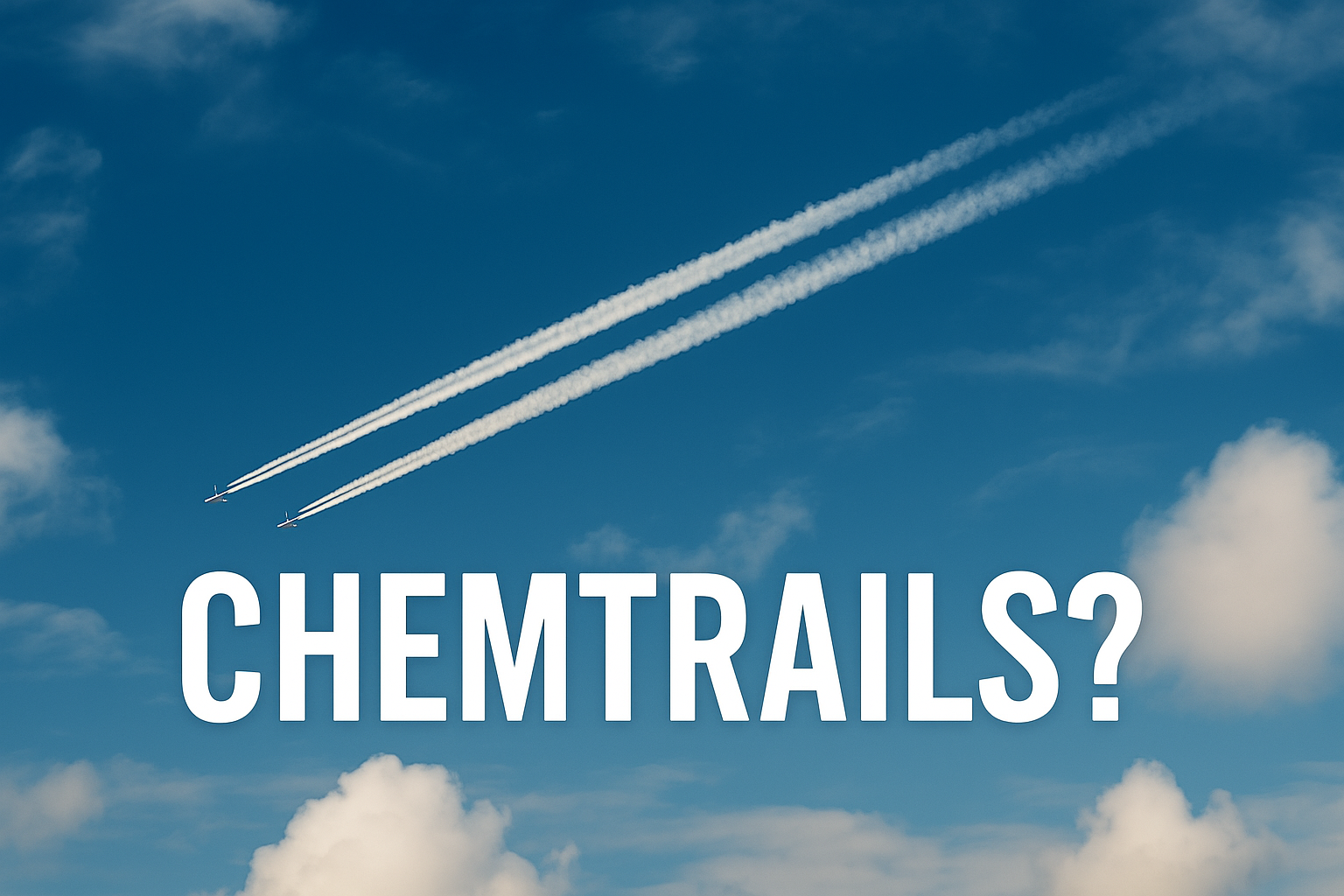Claims about “chemtrails” in the UK have surged alongside government-backed geoengineering trials, sparking confusion between science, conspiracy, and climate innovation. Here’s what’s really going on above British skies.
Growing suspicion meets high-altitude science
Across the UK, from Cornwall to Cumbria, a growing number of people are gazing up at the sky and asking the same uneasy question: what are those long, lingering white lines trailing behind aeroplanes? For decades, these visible streaks have been dismissed by scientists as contrails — condensation trails formed when warm, moist air from jet engines meets the freezing atmosphere. But a persistent corner of public discourse insists there’s more to the story.
The so-called “chemtrail” theory claims these trails aren’t just water vapour, but chemical agents sprayed deliberately for purposes ranging from population control to climate manipulation. Though widely discredited by experts, the theory has found new energy as the UK government funds small-scale geoengineering experiments that, at a glance, might look alarmingly similar.
What the science says: contrails, not chemicals
According to leading atmospheric scientists and the UK government, there’s no evidence to support the idea that commercial aircraft are releasing harmful substances into the sky. Contrails, they explain, are a normal by-product of jet exhaust. When hot engine emissions hit cold air at high altitudes, water vapour condenses and freezes, forming the visible trails. Under certain atmospheric conditions — particularly when humidity is high — these trails can linger for hours, forming cloud-like patterns that evolve with wind and weather.
Experts point out that the length, shape and persistence of a contrail depend on a number of environmental factors, not what’s inside the plane. Researchers at Imperial College London have even shown that new aircraft designs and flight patterns are making contrails more common, not because of secret chemicals, but due to efficiency changes and denser air traffic.
Conspiracies gaining altitude
Despite scientific consensus, belief in chemtrails remains surprisingly resilient. In the UK, social media is flooded with posts speculating about unnatural cloud formations, suspicious air patterns, and alleged health effects. Some campaigners even cite documents from government geoengineering research as proof of secret spraying — though these documents openly outline theoretical climate interventions, not covert operations.
A study from Cambridge’s Centre for Climate Repair found that online chemtrail narratives tend to spike when governments announce solar radiation experiments. In 2025, public concern rose after the UK’s Advanced Research and Invention Agency (ARIA) revealed plans to fund real-world geoengineering trials. These included proposals to test sea-salt aerosols and mineral dust sprays — legitimate, small-scale experiments designed to explore ways of reflecting sunlight to cool the Earth. To the sceptical eye, they looked suspiciously like the stuff of conspiracy.
Geoengineering and transparency
The difference, say scientists, is transparency. While the idea of manipulating the climate may sound unsettling, the geoengineering research being undertaken by British institutions is subject to public oversight, environmental assessment, and academic scrutiny. No large-scale or secret atmospheric spraying is taking place. The UK government has publicly stated, multiple times, that it does not authorise any such activities.
In response to Freedom of Information requests, departments including the Ministry of Defence and the Department for Energy Security and Net Zero have confirmed they hold no data on any form of chemtrail spraying. Wales, Scotland and Northern Ireland have issued similar denials. The geoengineering trials being discussed are limited in scope and heavily regulated — nothing resembling the sweeping operations described by chemtrail theorists.
Where concern meets climate
Still, it’s easy to understand where public anxiety stems from. Climate change has brought with it a host of drastic-sounding solutions. When people read about aerosols in the sky and see white trails overhead, the dots can feel like they’re connecting. And in an age of eroding trust in institutions, even implausible theories can feel more believable than distant scientific reassurances.
There’s also a real ethical conversation to be had about geoengineering. Critics argue that even transparent experiments risk opening the door to future misuse, or distracting from the more urgent work of reducing carbon emissions. That’s a legitimate debate — and one that deserves public engagement.
Looking up with open eyes
In the end, the evidence strongly suggests that the trails criss-crossing the skies above the UK are the result of physics, not secret plots. But they also reflect something deeper: a society grappling with uncertainty, climate anxiety, and a desire for accountability. Whether you see patterns in the clouds or just water vapour, the questions they raise are rooted in real fears — and those deserve clear answers, not dismissals.
What do you think? Have your say on the chemtrail debate. Do geoengineering plans worry you — or do you see them as a necessary part of the climate toolkit?

Hi, I’m Sarah Jade. I’m 25, Yorkshire born stubborn redhead, and just finding my feet in the wild world of independent journalism.I’ve always had this fire in me for telling real stories, the kind that actually mean something. I love the British spirit, the blunt honesty, the humour, and yes… I do get emotional about free speech and the truth. I’m not perfect, but I care deeply about people, fairness, and saying what others might be too scared to.
